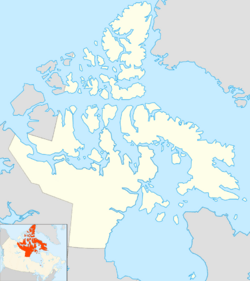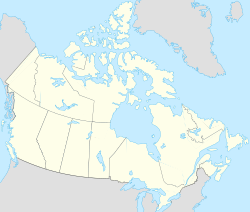Deer Island (Kivalliq Region) facts for kids
| Geography | |
|---|---|
| Location | Chesterfield Inlet |
| Coordinates | 63°37′N 091°29′W / 63.617°N 91.483°W |
| Archipelago | Canadian Arctic Archipelago |
| Administration | |
| Nunavut | Nunavut |
| Region | Kivalliq |
| Demographics | |
| Population | Uninhabited |
Deer Island is a small, uninhabited island located in the northern part of Canada. It is one of many islands found within the Canadian Arctic Archipelago. This group of islands is in the Kivalliq Region of Nunavut, Canada. Deer Island is specifically situated in an area known as Chesterfield Inlet.
Contents
Exploring Deer Island's Location
Deer Island is part of the vast Canadian Arctic Archipelago. This huge collection of islands stretches across the Arctic Ocean. It is a very cold and remote part of the world.
Deer Island is found in the territory of Nunavut. Nunavut is the largest and newest territory of Canada. It covers a massive area, mostly in the Arctic. The island is part of the Kivalliq Region within Nunavut. This region is known for its wide-open spaces and unique wildlife.
What is Chesterfield Inlet?
Deer Island is located inside Chesterfield Inlet. An inlet is a narrow arm of the sea, like a long bay. Chesterfield Inlet connects to Hudson Bay. This area is important for local wildlife and has a rich history.
An Uninhabited Arctic Island
Deer Island is an uninhabited island. This means no people live there permanently. Many islands in the Canadian Arctic are uninhabited. They are often too cold and remote for permanent settlements.
Why are some islands uninhabited?
Islands like Deer Island are often uninhabited because of their harsh environment. The Arctic climate is very challenging. It has long, dark winters and short, cool summers. There are also limited resources for people to live comfortably.
Wildlife on Arctic Islands
Even though no humans live on Deer Island, it might be home to various Arctic animals. These could include polar bears, seals, and different types of birds. These animals are well-adapted to the cold environment. They rely on the remote islands for breeding and hunting grounds.



